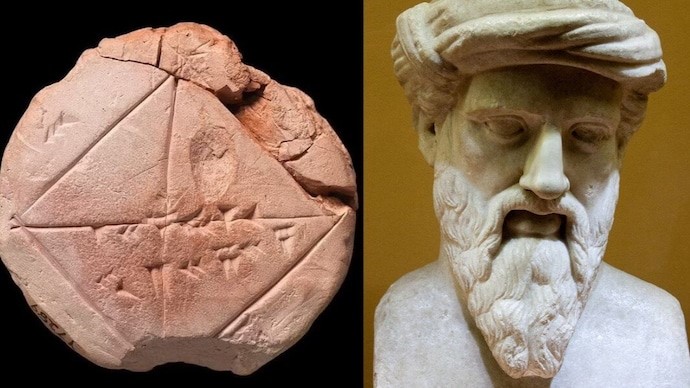Free Courses Sale ends Soon, Get It Now


Free Courses Sale ends Soon, Get It Now



Disclaimer: Copyright infringement not intended.
Context
While the Greek philosopher Pythagoras, born in 570 BC, has long been accredited with creating the mathematical concept that determines the missing side of a right-angled triangle, fresh evidence appears to debunk this.
Details
The Babylonian Discovery:
Pythagoras: Popularizer, Not Pioneer:
Babylonian Understanding of Mathematics:
Implications for Mathematical History:
Pythagoras - The Man
The Pythagorean Theorem
Historical Significance
Applications
Proof of the Theorem
Legacy
Conclusion
The revelation of an ancient Babylonian tablet predating Pythagoras's era with knowledge of the Pythagorean Theorem reshapes our understanding of mathematical history. It suggests that this fundamental theorem was part of Babylonian mathematics long before it gained fame in Greece. Pythagoras's role transitions from being the theorem's originator to a popularizer of mathematical knowledge. This discovery underscores the complexity of tracing the origins of mathematical concepts and the rich mathematical heritage of ancient civilizations.
|
PRACTICE QUESTION Q. Recent findings suggest that the Pythagorean Theorem might have predated Pythagoras by over a millennium. What key piece of evidence supports this claim? 1. An ancient Greek manuscript discovered in Athens. 2. A Babylonian clay tablet known as YBC 7289. 3. A collection of Egyptian hieroglyphics. 4. Oral traditions passed down through generations in Mesopotamia. Choose the correct option: A) 1 and 2 B) 2 and 4 C) 2 only D) 3 and 4 Answer: C) |
© 2024 iasgyan. All right reserved